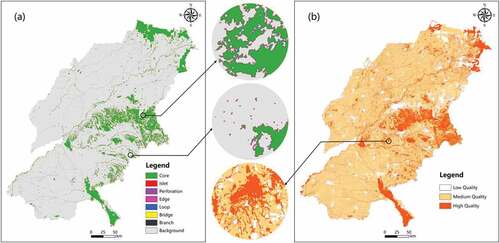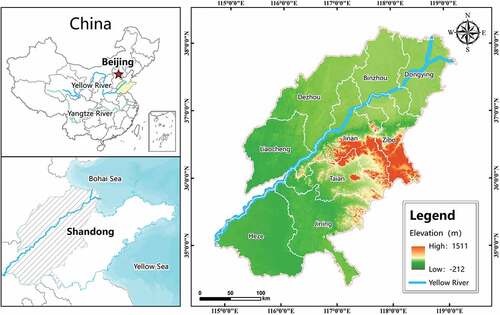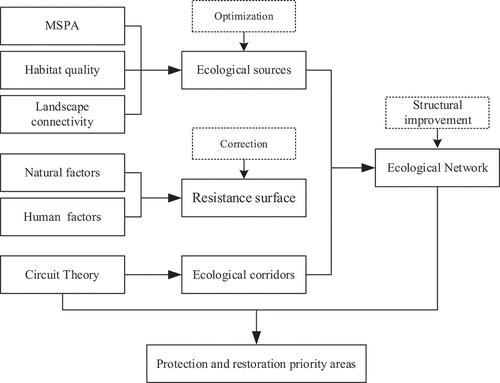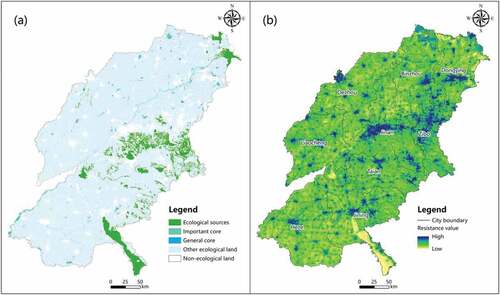Figures & data
Table 1. The weights and maximum influence distances of threat sources.
Table 2. Sensitivity of different habitats types to different threat factors.
Figure 3. Results of MSPA and habitat quality evaluation. (a) MSPA results; (b) habitat quality evaluation results.








